This exploration unveils a dazzling array of avian counterparts, each possessing its distinctive charm and allure reminiscent of the iconic peafowl.
From the resplendent plumage of pheasants to the intricate courtship displays of various bird species, this compilation delves into the vibrant world of feathered beauty.
Witness the grace of the green peafowl, the unique color variations of the Spalding peafowl, and the rare elegance of the Congo peafowl.
Delve into the enchanting lives of birds such as the superb bird-of-paradise, Wilson’s bird-of-paradise, and the regal king bird-of-paradise.
With insights into their populations, lifespans, and conservation statuses, it offers a comprehensive glimpse into the captivating diversity of birds akin to peacocks, celebrating nature’s artistry and the delicate balance that sustains these splendid creatures in their various habitats.
Join us on this ornithological journey as we unravel the mystique and beauty of these magnificent birds, united by their resemblance to the majestic peafowl. Stay sharp.
23 Birds Similar To Peacocks
Embark on a captivating journey through the avian wonders akin to peacocks, from the vibrant displays of pheasants to the rare elegance of the Congo peafowl.
Each bird unfolds a unique story, a symphony of colors and adaptations in the fascinating world of nature.
1. Pheasants
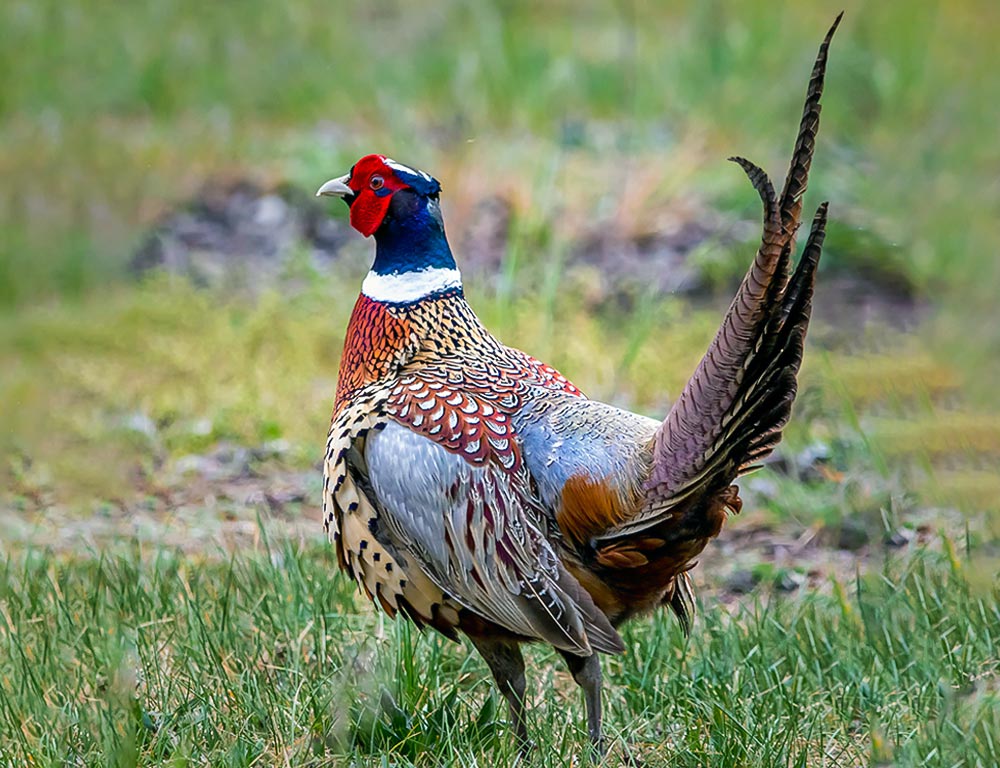
- Scientific name: Phasianus colchicus
- Population: Varied, depending on species
- Life span: 5-10 years
- Size: 24-35 inches
- Weight: 1.5-5 pounds
- Wingspan: 23-35 inches
- Status: Varied, some species are of least concern, while others are endangered
Pheasants, known for their vibrant plumage, inhabit diverse regions. They thrive in grasslands and woodlands, displaying a remarkable array of colors.
Their lifespan ranges from 5 to 10 years, and their populations vary across species. Pheasants are generally medium-sized birds with distinctive markings, and their weight, wingspan, and size differ among species.
Some, like the Lady Amherst’s pheasant, exhibit elaborate plumage reminiscent of peacocks.
2. Junglefowl

- Scientific name: Gallus
- Population: Various, some species are widespread
- Life span: 5-8 years
- Size: 16-24 inches
- Weight: 1-3 pounds
- Wingspan: 24-28 inches
- Status: Least concern to vulnerable
Junglefowl, close relatives of domestic chickens, display remarkable colors. These birds inhabit dense forests and grasslands, contributing to the biodiversity of their ecosystems.
Their lifespan ranges from 5 to 8 years, and populations vary across species. Junglefowl are generally smaller than peafowl, but their vibrant plumage, especially in males, is striking.
Some species, like the Red Junglefowl, have adapted to human presence, while others face threats due to habitat loss.
3. Ocellated Turkeys
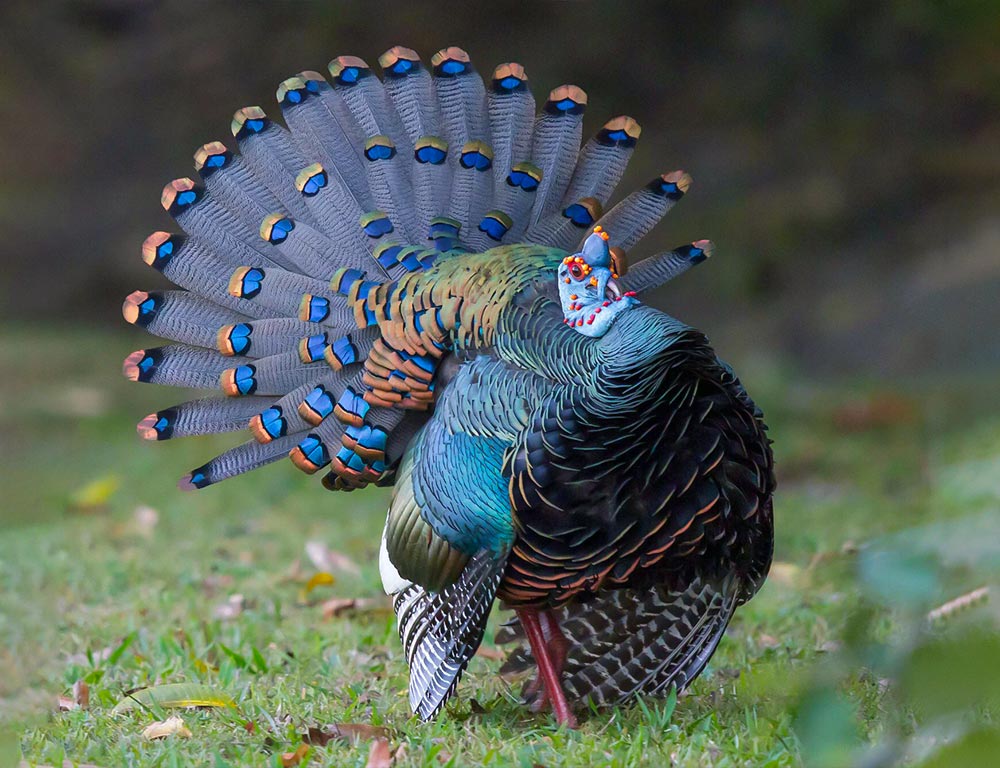
- Scientific name: Meleagris ocellata
- Population: Estimated 200,000 individuals
- Life span: 3-4 years
- Size: 26-30 inches
- Weight: 8-12 pounds
- Wingspan: 42-48 inches
- Status: Near Threatened
Ocellated Turkeys, found in the Yucatan Peninsula, are known for their iridescent plumage and eye-catching tail feathers.
With a population of around 200,000, these turkeys face challenges due to habitat loss and hunting. Their lifespan is relatively short, around 3-4 years.
Ocellated Turkeys are smaller than peafowls but share the trait of vibrant feather displays during courtship rituals. Conservation efforts are crucial to preserving their unique beauty.
4. Long-tailed Widowbird
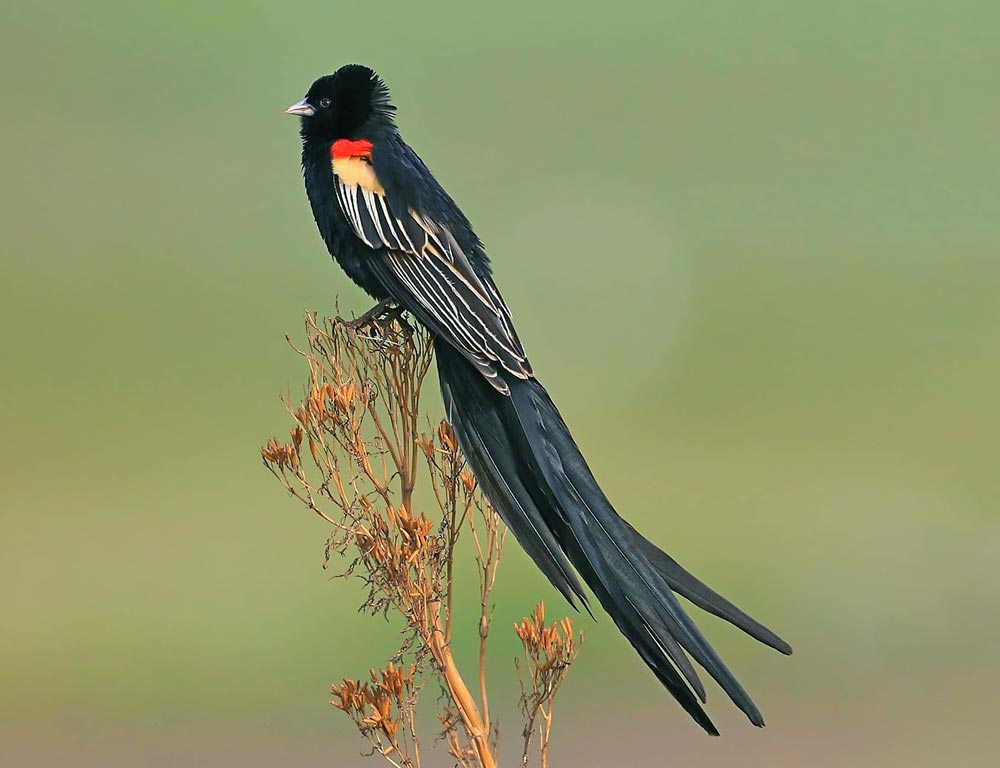
- Scientific name: Euplectes progne
- Population: Widespread, but specific numbers unknown
- Life span: 2-3 years
- Size: 7-9 inches
- Weight: 1-2 ounces
- Wingspan: 8-12 inches
- Status: Least concern
The Long-tailed Widowbird, native to Africa, stands out for its exceptionally long tail feathers. Despite their small size, these birds are renowned for their impressive displays during the breeding season.
With a lifespan of 2-3 years, their populations are widespread, but specific numbers are unknown.
These widowbirds, though not as large as peafowls, share the spectacle of vibrant plumage, particularly the remarkable elongated tails that enhance their courtship rituals.
5. Greater Bird-of-Paradise
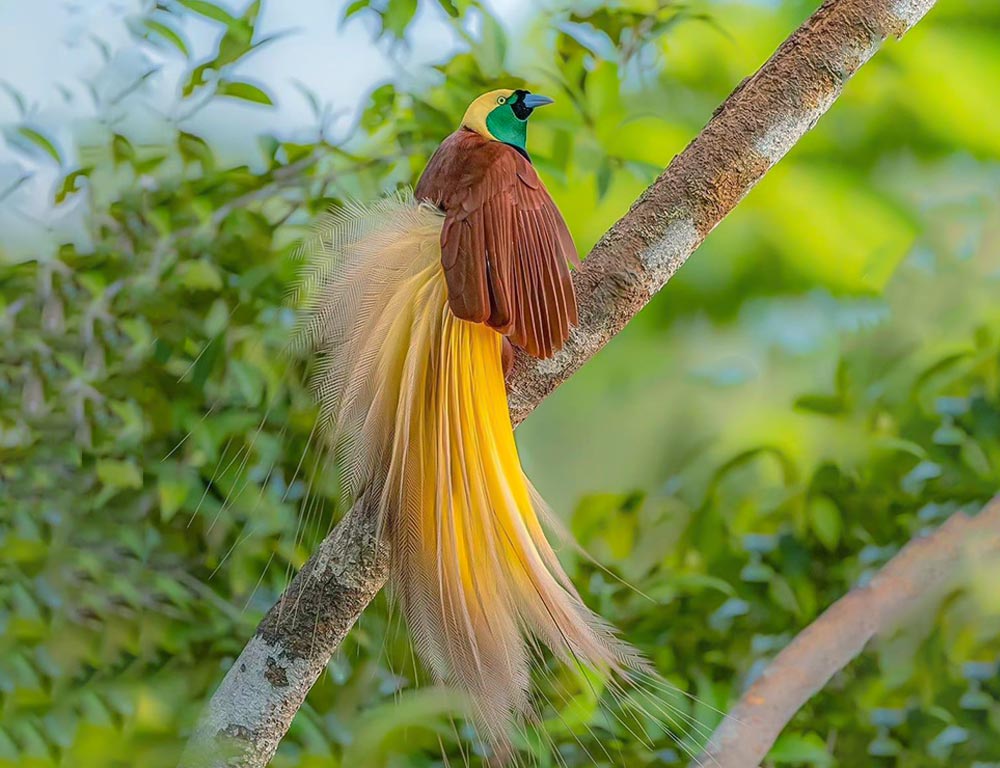
- Scientific name: Paradisaea apoda
- Population: Stable, exact numbers unknown
- Life span: 5-10 years
- Size: 13-17 inches
- Weight: 5-7 ounces
- Wingspan: 6-8 inches
- Status: Least concern
The Greater Bird-of-Paradise, endemic to New Guinea, is famed for its vibrant plumage and elaborate courtship displays. With a stable population, their exact numbers remain unknown.
These birds have a lifespan of 5-10 years, displaying intricate feather arrangements during breeding rituals.
Males showcase vibrant colors and distinctive features, contributing to their conservation as a least concern species.
6. Sicklebills
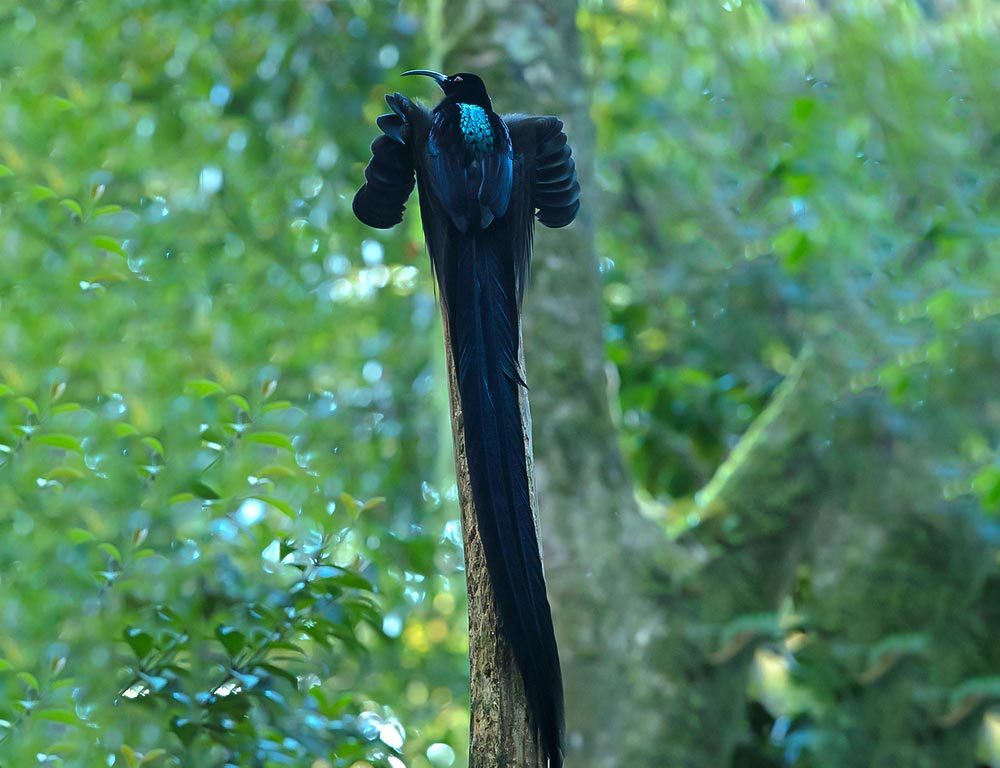
- Scientific name: Epimachus spp. (various species)
- Population: Varies by species, some are threatened
- Life span: 5-10 years
- Size: 12-18 inches
- Weight: 5-10 ounces
- Wingspan: 7-10 inches
- Status: Least concern to vulnerable
Sicklebills, a group of birds in the Paradisaeidae family, inhabit the forests of New Guinea. Population statuses differ among species, with some facing threats due to habitat loss.
These birds have a lifespan of 5-10 years, showcasing distinct sickle-shaped bills and vibrant plumage during courtship. Conservation efforts are essential for those species classified as vulnerable.
7. Arfak Astrapias
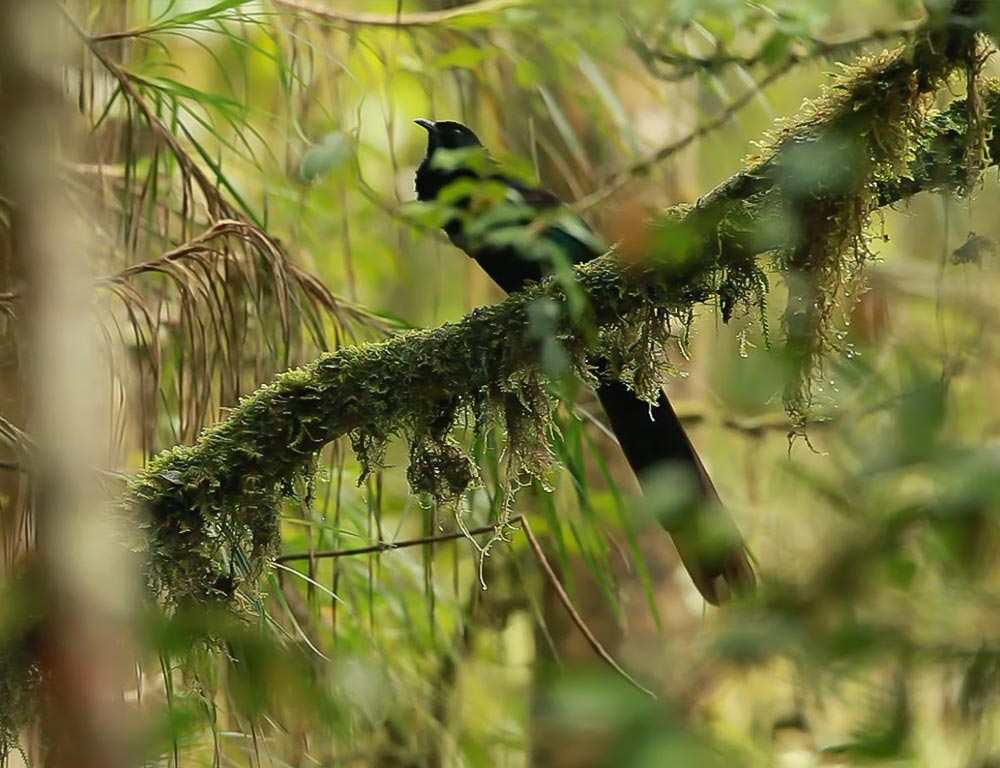
- Scientific name: Astrapias spp. (various species)
- Population: Limited information, some are likely threatened
- Life span: 5-10 years
- Size: 9-14 inches
- Weight: 2-5 ounces
- Wingspan: 6-9 inches
- Status: Data deficient, potential threat
Arfak Astrapias, found in the mountains of New Guinea, are characterized by their unique plumage and courtship displays. Limited population information is available, but some species may face threats.
With a lifespan of 5-10 years, these birds exhibit remarkable colors and features, contributing to the biodiversity of their habitats. More research is needed to assess their conservation status accurately.
8. Green Peafowl
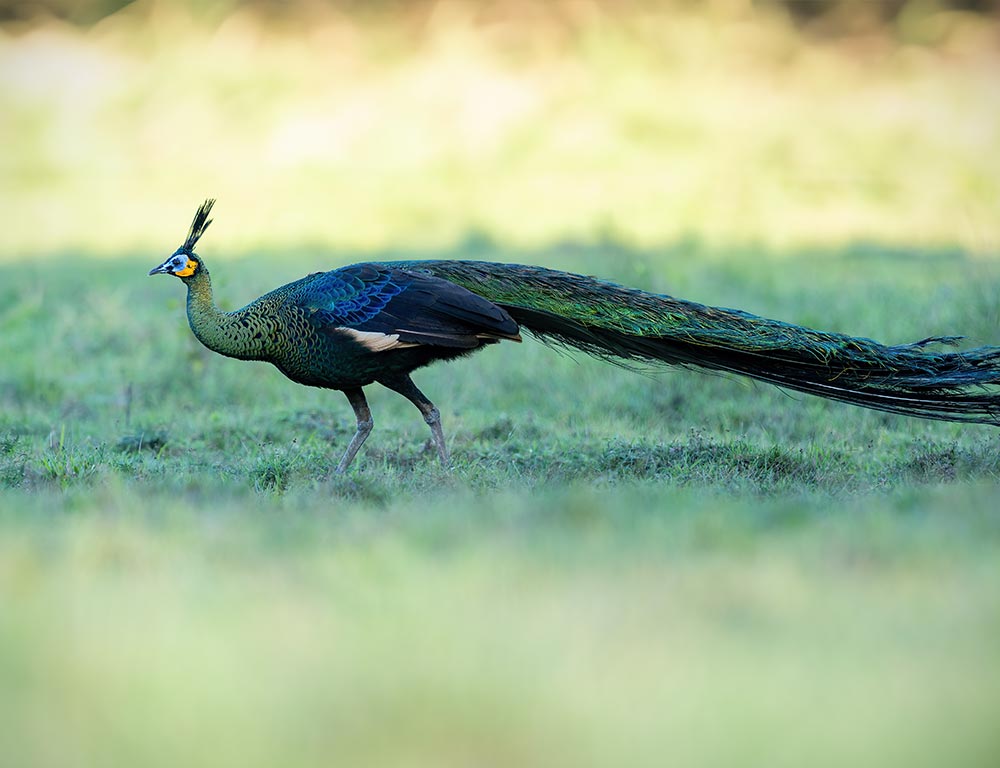
- Scientific name: Pavo muticus
- Population: Declining, especially in some regions
- Life span: 10-25 years
- Size: 39-43 inches
- Weight: 5-8 pounds
- Wingspan: 59-67 inches
- Status: Endangered
Green Peafowl, native to Southeast Asia, face significant threats leading to a declining population, especially in certain areas.
With a lifespan of 10-25 years, these large birds showcase iridescent green and blue plumage.
Habitat destruction and hunting pose severe risks to their survival, warranting conservation efforts to protect this endangered species.
9. Congo Peafowl
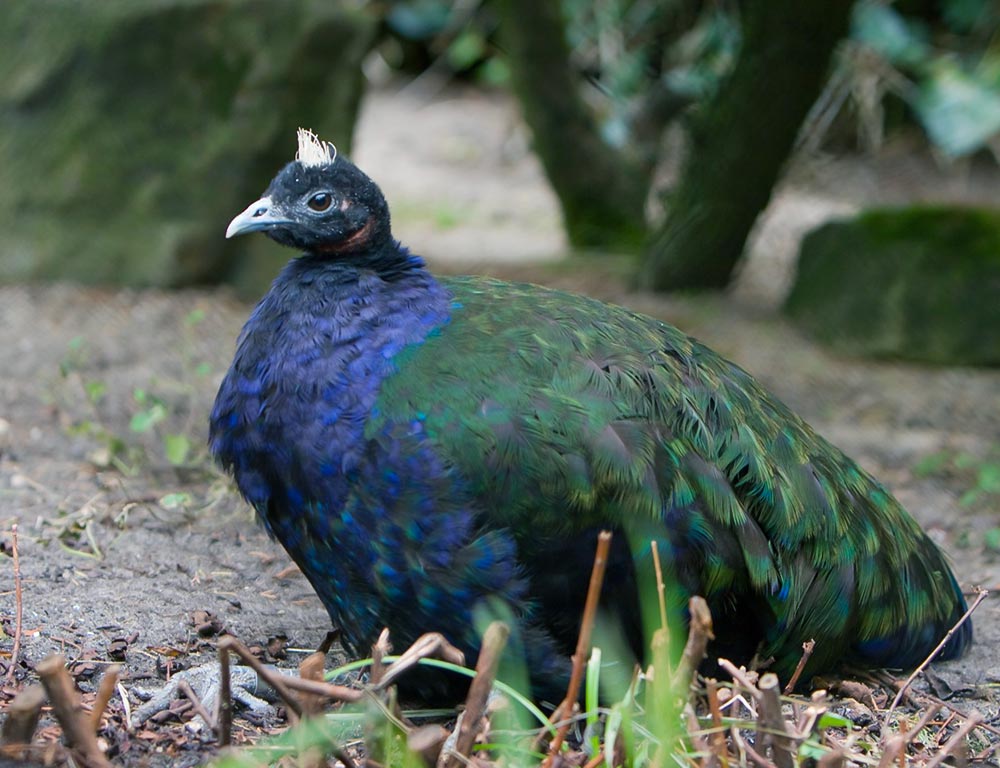
- Scientific name: Afropavo congensis
- Population: Unknown, likely small
- Life span: Estimated 10-15 years
- Size: 28-31 inches
- Weight: 4-5 pounds
- Wingspan: Information not widely available
- Status: Near Threatened
The Congo Peafowl, endemic to the Congo Basin, has a limited known population, likely small.
With an estimated lifespan of 10-15 years, these birds are characterized by their deep blue plumage and distinctive crest.
Despite being classified as near threatened, their precise status remains uncertain, emphasizing the need for further research and conservation initiatives in their native habitat.
10. Black-Shouldered Peafowl
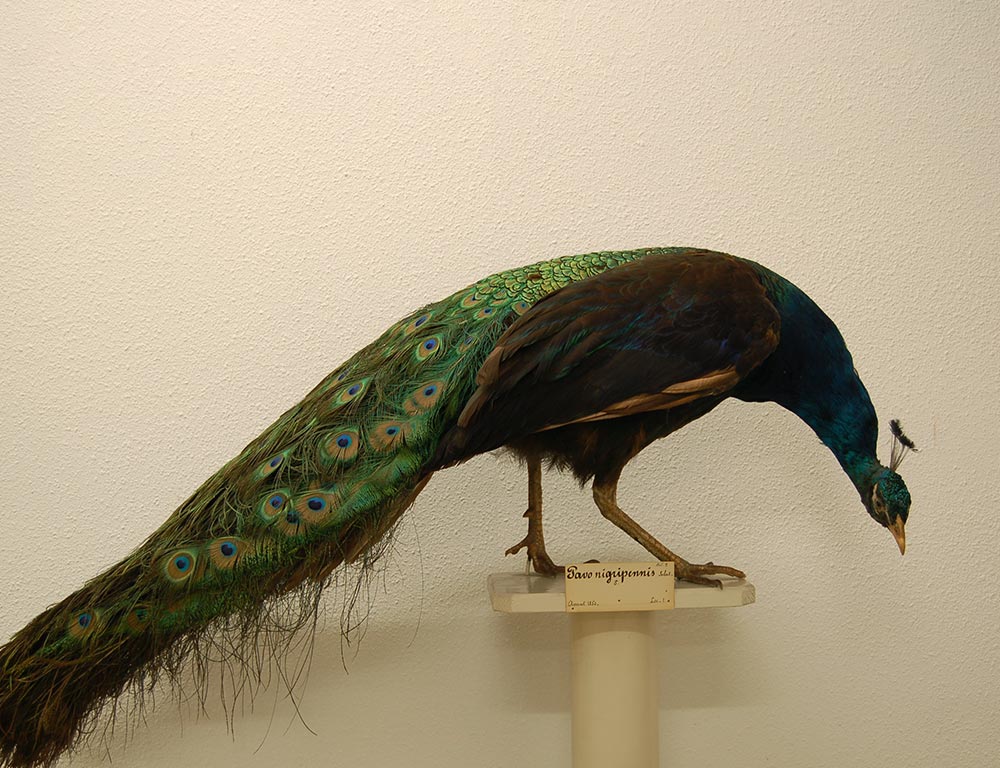
- Scientific name: Pavo cristatus
- Population: Widespread and stable
- Life span: 15-20 years
- Size: 40-45 inches
- Weight: 8-13 pounds
- Wingspan: 60-70 inches
- Status: Least concern
The Black-Shouldered Peafowl, a subspecies of the Indian Peafowl, is known for its stunning iridescent plumage and distinctive black shoulders.
With a widespread and stable population, these peafowl can be found in various regions. Their lifespan ranges from 15 to 20 years, and their impressive size and vibrant appearance make them popular in captivity.
Considered the least concern, conservation efforts focus on preserving their natural habitats.
11. Spalding Peafowl
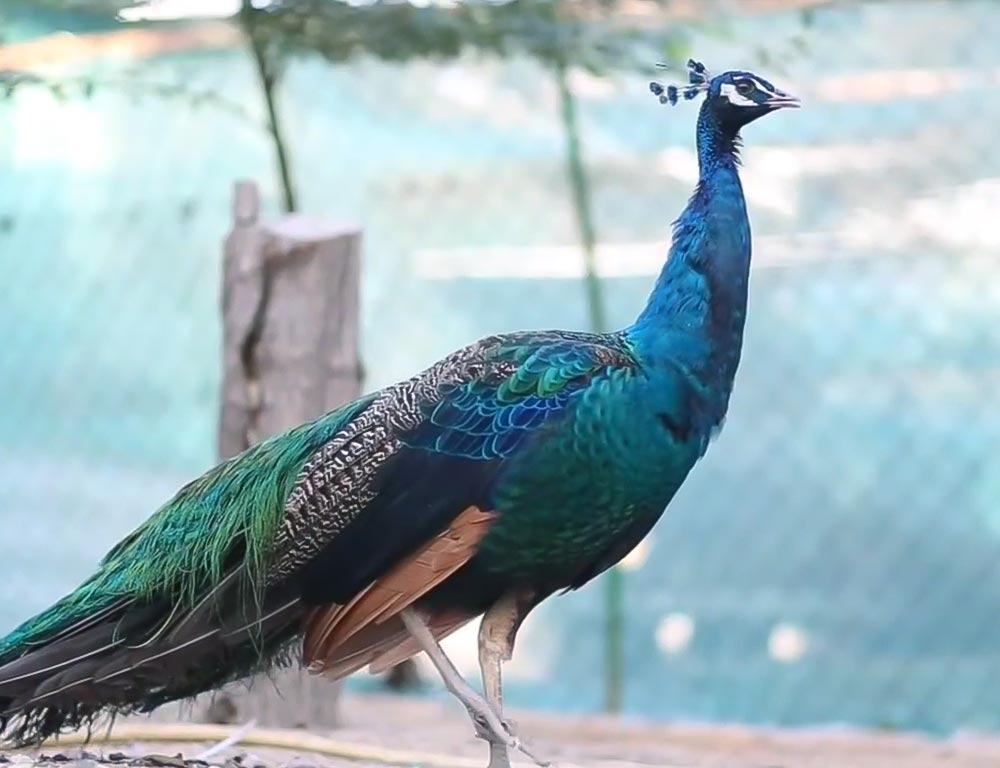
- Scientific name: Pavo cristatus
- Population: Captive, specific numbers unknown
- Life span: 15-20 years
- Size: 40-45 inches
- Weight: 8-13 pounds
- Wingspan: 60-70 inches
- Status: Not applicable (captive)
The Spalding Peafowl is not a distinct species but a color variety resulting from a specific genetic combination.
Created in captivity, particularly through the crossbreeding of different peafowl species, the Spalding Peafowl exhibits a range of vibrant colors.
As captive animals, their population is not tracked in the wild, and their conservation status is not applicable. Breeding programs often manage and monitor these colorful peafowl varieties.
12. White Peafowl
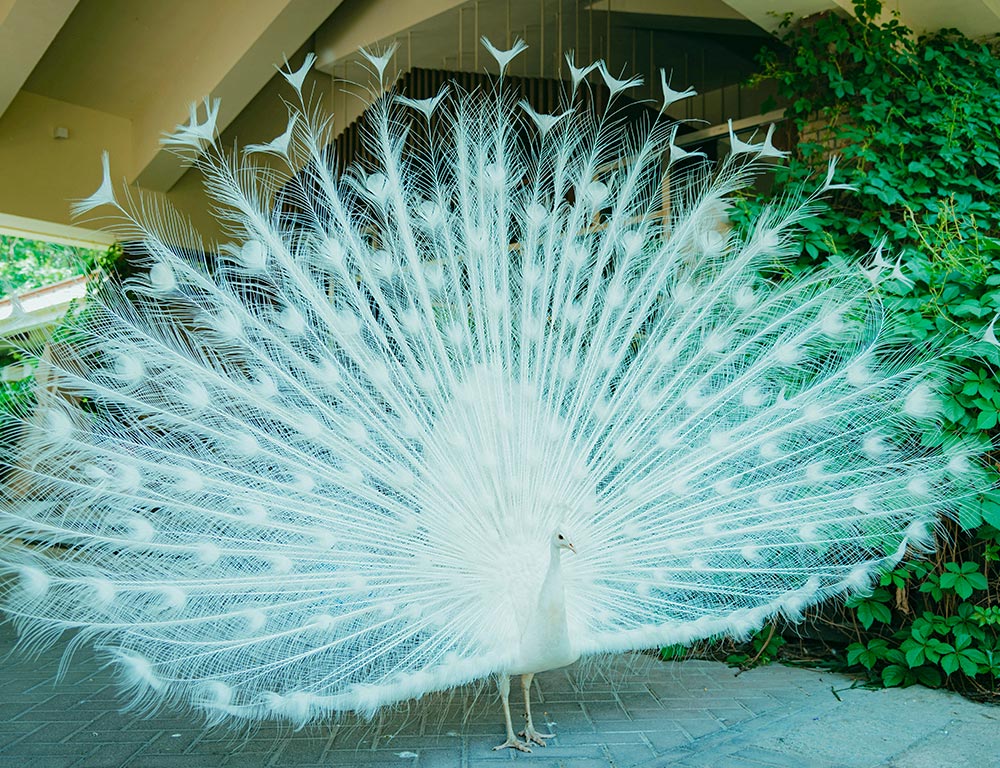
- Scientific name: Pavo cristatus
- Population: Limited in the wild, more common in captivity
- Life span: 15-20 years
- Size: 40-45 inches
- Weight: 8-13 pounds
- Wingspan: 60-70 inches
- Status: Least concern (wild population); Not applicable (captive)
White Peafowl, a color variant of the Indian Peafowl, are relatively rare in the wild. Their captivating all-white plumage sets them apart from their more common counterparts.
While the wild population is considered the least concern, the white coloration is more prevalent in captivity, where their numbers are not tracked as a distinct population. In captivity, they contribute to the diversity of peafowl breeds.
13. Impeyan Pheasant
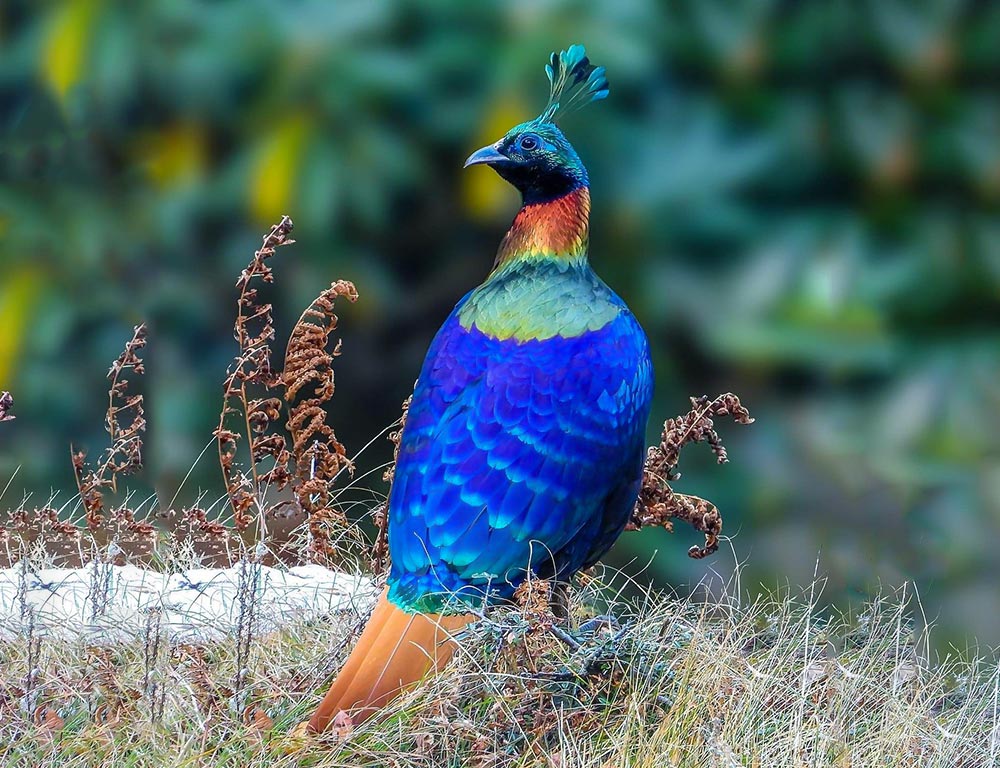
- Scientific name: Lophophorus impejanus
- Population: Unknown, likely decreasing
- Life span: 8-12 years
- Size: 30-36 inches
- Weight: 2-3 pounds
- Wingspan: Information not widely available
- Status: Near Threatened
The Impeyan Pheasant, also known as the Himalayan Monal, is a strikingly beautiful bird native to the Himalayas.
Although exact population numbers are unknown, the species is believed to be decreasing due to habitat loss and hunting.
With a lifespan of 8-12 years, these pheasants are characterized by vibrant colors and an impressive crest.
Conservation efforts are crucial to safeguarding this near-threatened species and preserving the biodiversity of its mountainous habitats.
14. Resplendent Quetzal
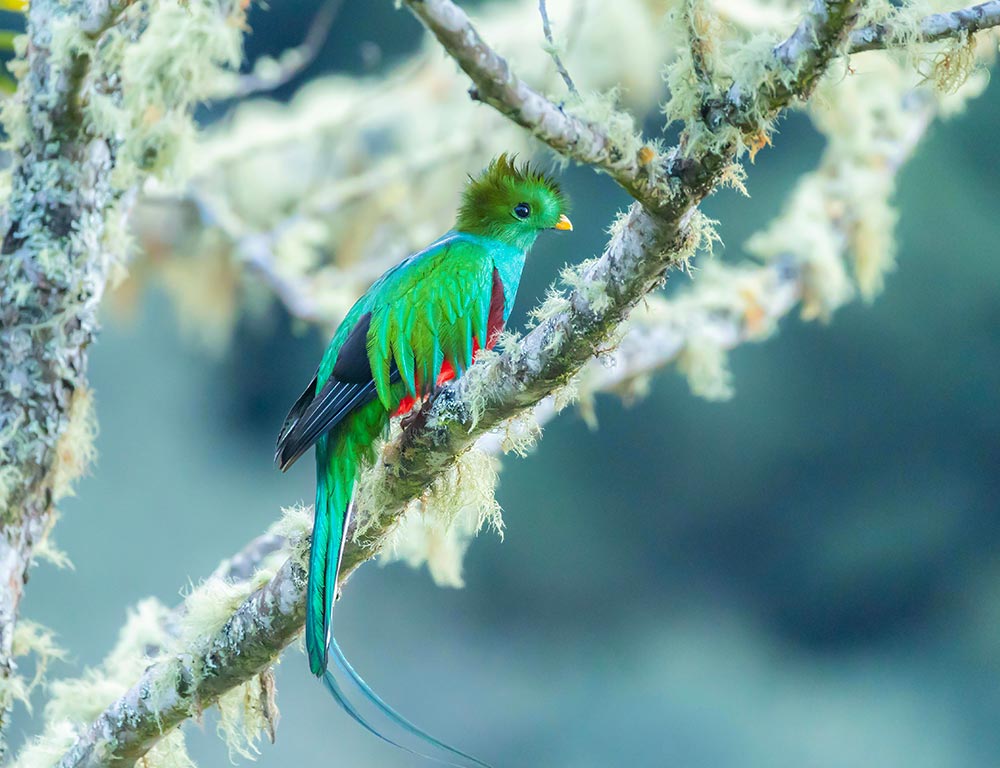
- Scientific name: Pharomachrus mocinno
- Population: Unknown, likely decreasing
- Life span: 6-10 years
- Size: 14-16 inches
- Weight: 6-7 ounces
- Wingspan: 22-26 inches
- Status: Near Threatened
The Resplendent Quetzal, native to Central America, is renowned for its vibrant green and red plumage. While their exact population is unknown, there are concerns about a decreasing trend due to habitat loss.
With a lifespan of 6-10 years, these birds are often considered symbols of freedom and wealth in Mesoamerican cultures.
Conservation efforts are vital to protect their cloud forest habitats and preserve the beauty of this near-threatened species.
15. Red-Billed Streamertail
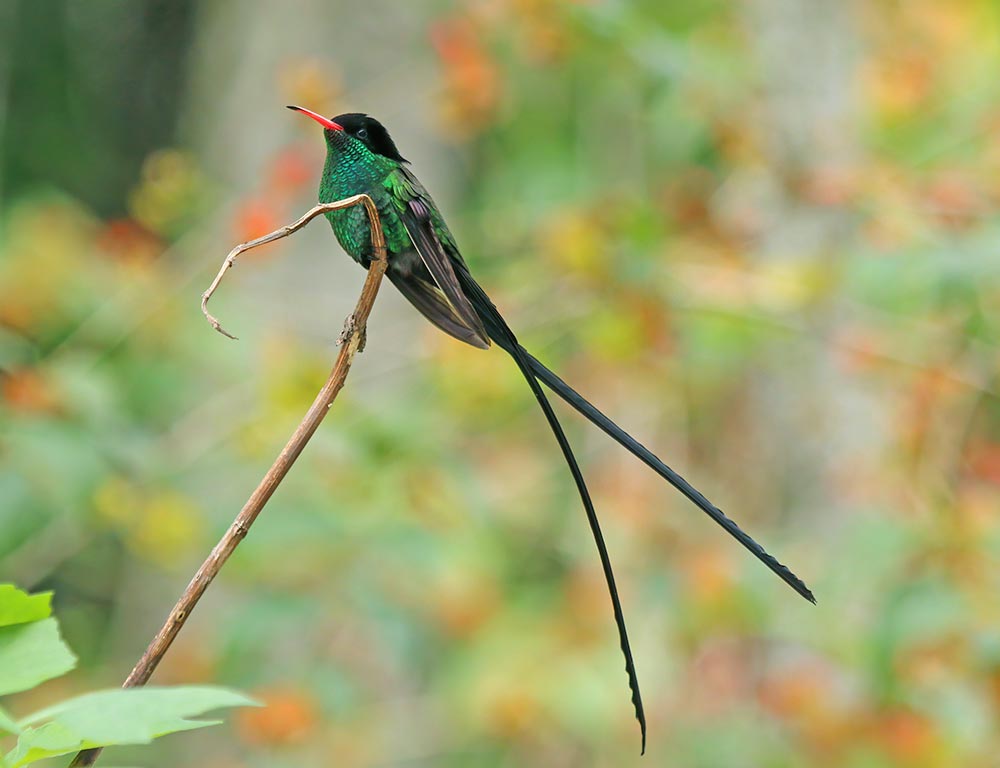
- Scientific name: Trochilus polytmus
- Population: Stable, specific numbers unknown
- Life span: 5-7 years
- Size: 4-4.5 inches
- Weight: 0.1-0.2 ounces
- Wingspan: 4-4.5 inches
- Status: Least concern
The Red-Billed Streamertail, a hummingbird species found in Jamaica, is known for its striking iridescent colors and long tail feathers.
With a stable population, specific numbers are not widely available. These tiny birds have a lifespan of 5-7 years and play a crucial role in pollination.
Their least concern status emphasizes the importance of preserving their habitats and supporting biodiversity in the Caribbean region.
16. Yellow-Breasted Fruit Dove
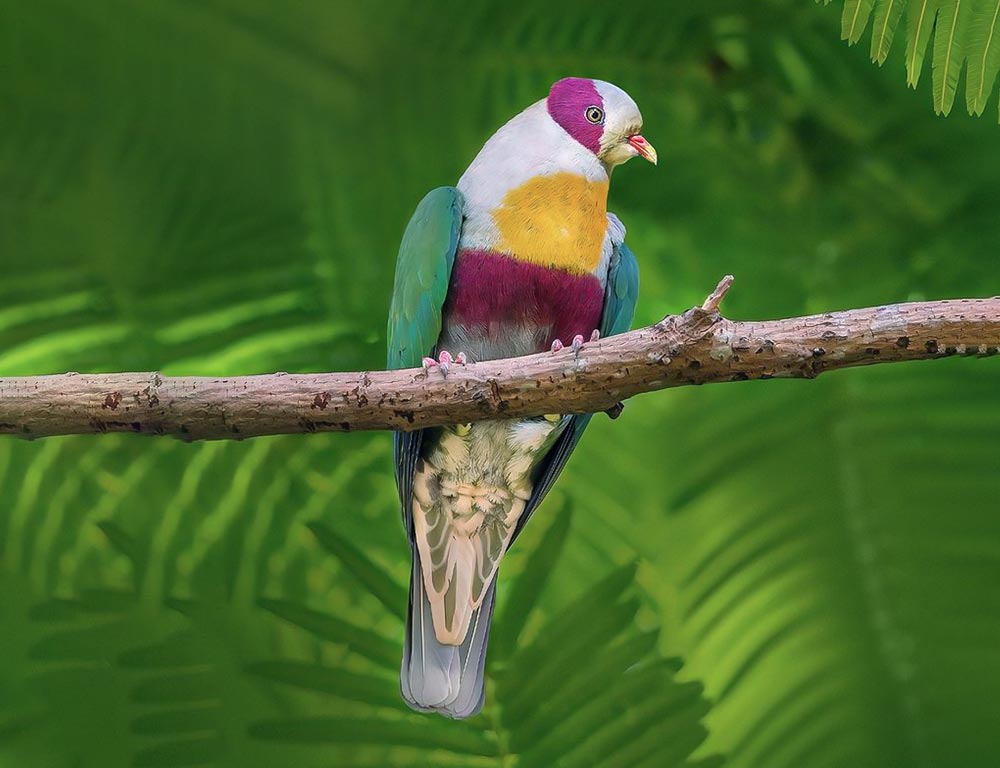
- Scientific name: Ptilinopus occipitalis
- Population: Unknown, likely stable
- Life span: 5-10 years
- Size: 9-10 inches
- Weight: 4-6 ounces
- Wingspan: Information not widely available
- Status: Least concern
The Yellow-Breasted Fruit Dove, found in Southeast Asia, is recognized for its vibrant plumage and fruit-eating habits. Though their population specifics are unknown, they are likely stable.
With a lifespan of 5-10 years, these doves contribute to forest ecosystems through seed dispersal.
Their least concern status highlights the importance of conserving their habitats to maintain biodiversity in the region.
17. Guianan Cock-of-the-Rock
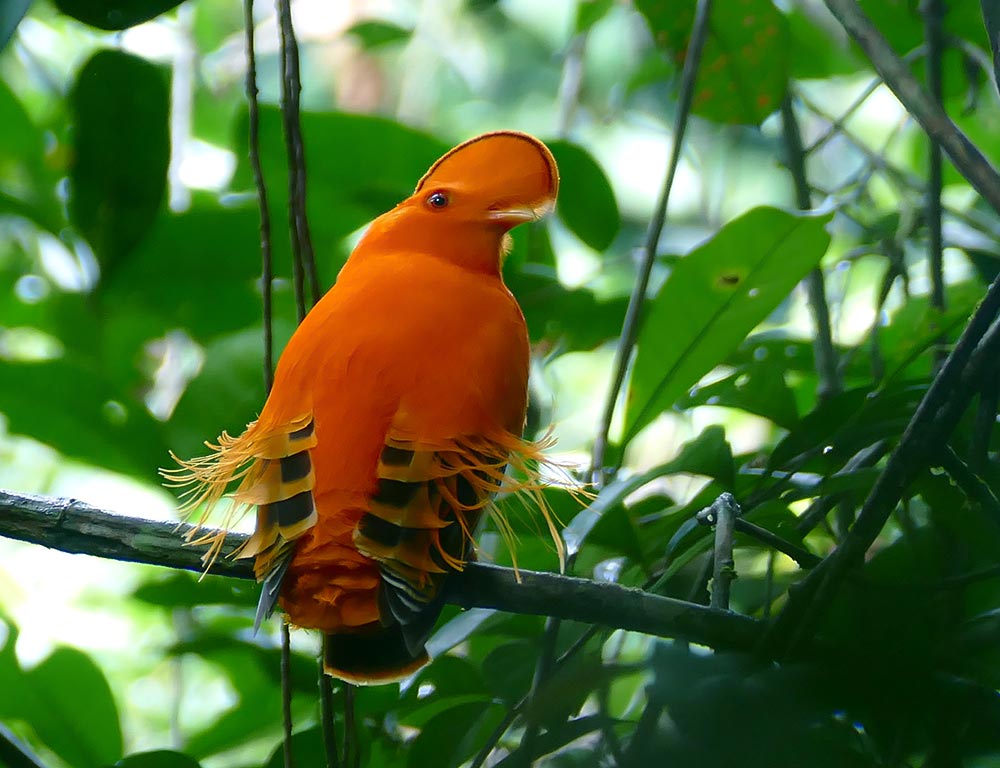
- Scientific name: Rupicola rupicola
- Population: Unknown, some populations declining
- Life span: 10-15 years
- Size: 12-13 inches
- Weight: 7-8 ounces
- Wingspan: Information not widely available
- Status: Least concern to vulnerable
The Guianan Cock-of-the-Rock, native to South America, is known for its distinctive appearance, including a prominent crest and bright orange plumage.
While specific population numbers are unknown, some populations are experiencing declines due to habitat loss. With a lifespan of 10-15 years, these birds play a vital role in forest ecosystems.
Conservation efforts are essential to protect their habitats and ensure the survival of this unique species, which ranges from least concern to vulnerable.
18. Superb Bird-of-Paradise
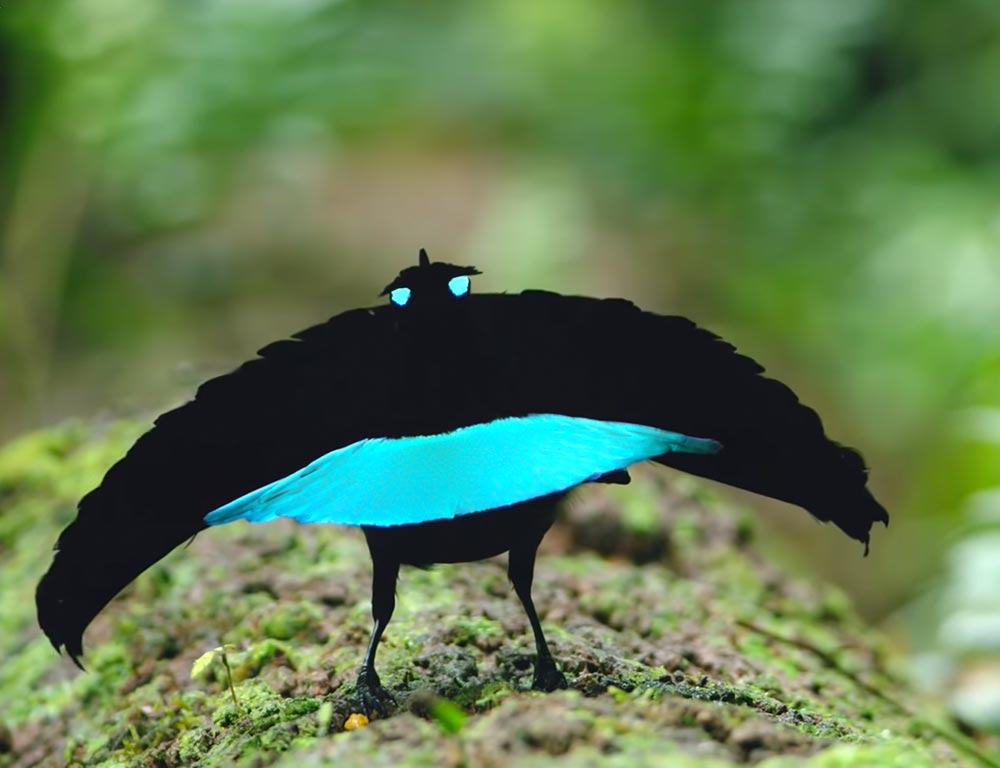
- Scientific name: Lophorina superba
- Population: Unknown, likely stable
- Life span: 5-7 years
- Size: 7-10 inches
- Weight: 0.7-1 ounce
- Wingspan: Information not widely available
- Status: Least concern
The Superb Bird-of-Paradise, found in New Guinea, is known for its intricate courtship displays and striking black and blue plumage.
While their population specifics are unknown, they are presumed to be stable.
With a lifespan of 5-7 years, these birds play a crucial role in the rainforest ecosystem. Their least concern status emphasizes the importance of preserving their habitats and protecting biodiversity in the region.
19. Wilson’s Bird-of-Paradise
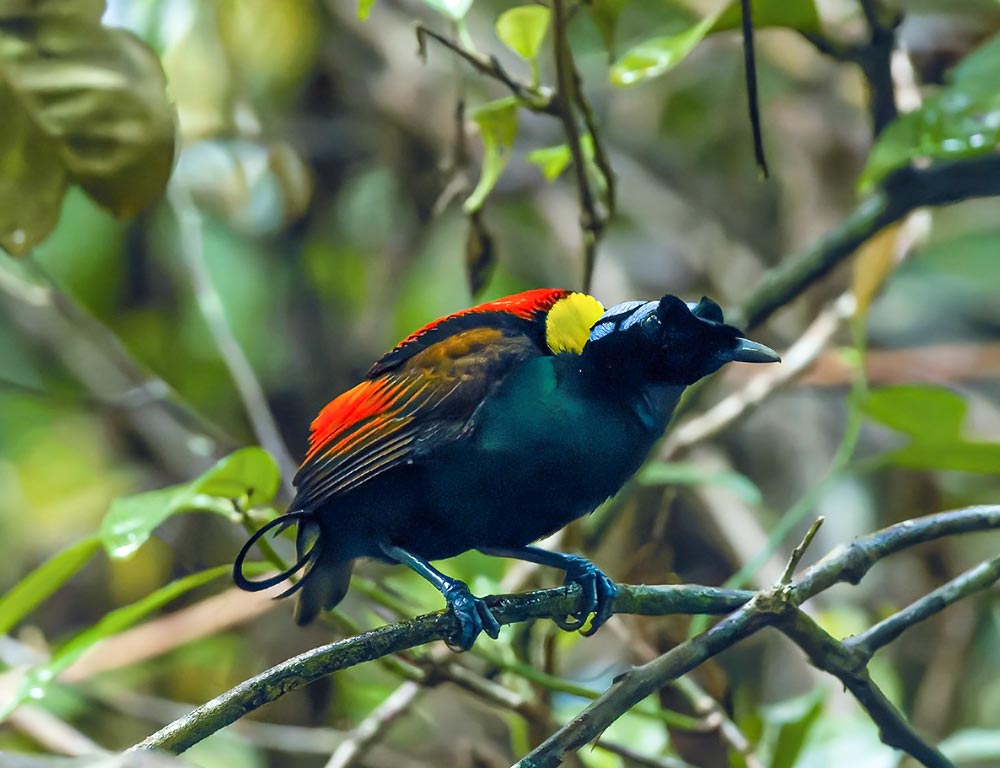
- Scientific name: Cicinnurus respublica
- Population: Unknown, likely decreasing
- Life span: 5-8 years
- Size: 5.5-6 inches
- Weight: 0.5-0.6 ounce
- Wingspan: Information not widely available
- Status: Near Threatened
Wilson’s Bird-of-Paradise, endemic to the islands of Indonesia, is recognized for the vibrant colors and intricate courtship displays of the males.
The specific population is unknown, but there are concerns about a decreasing trend due to habitat loss.
With a lifespan of 5-8 years, these small birds face threats to their survival, emphasizing the need for conservation efforts to protect their unique habitats.
20. King Bird-of-Paradise
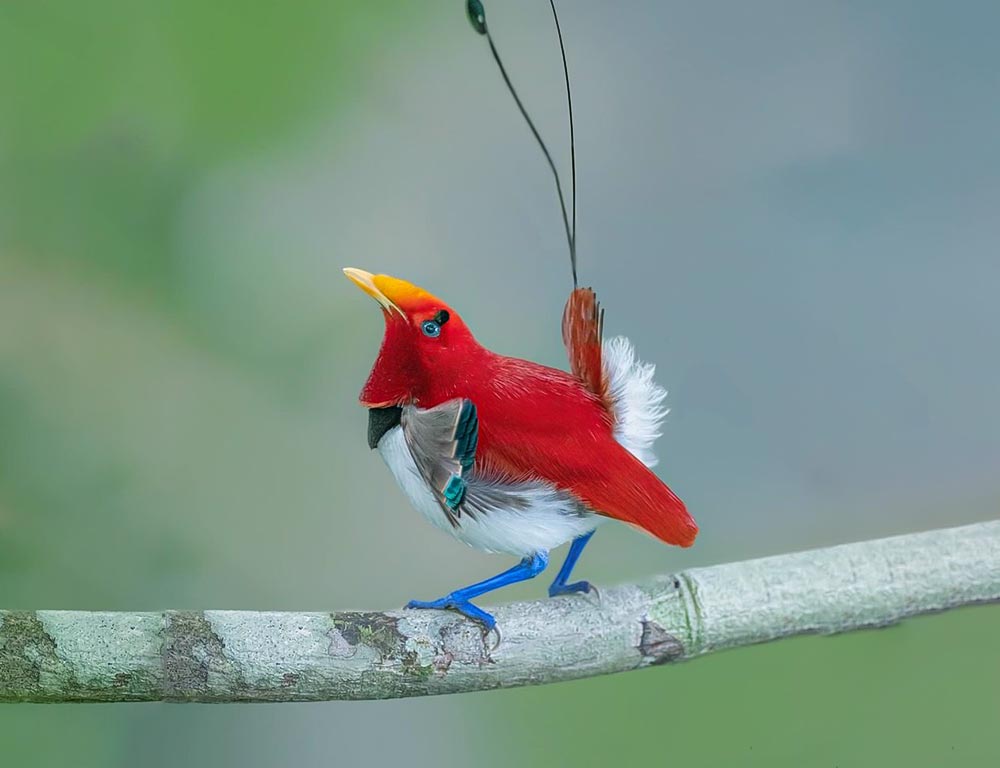
- Scientific name: Cicinnurus regius
- Population: Unknown, some populations declining
- Life span: 5-8 years
- Size: 5-6 inches
- Weight: 0.4-0.5 ounce
- Wingspan: Information not widely available
- Status: Least concern to near-threatened
The King Bird-of-Paradise, found in Indonesia, is known for its vibrant colors and elaborate courtship displays.
While specific population numbers are unknown, some populations are experiencing declines due to habitat loss. With a lifespan of 5-8 years, these small birds contribute to the biodiversity of their ecosystems.
Conservation efforts are essential to ensure the survival of this species, ranging from least concern to near threatened.
21. Twelve-Wired Bird-of-Paradise
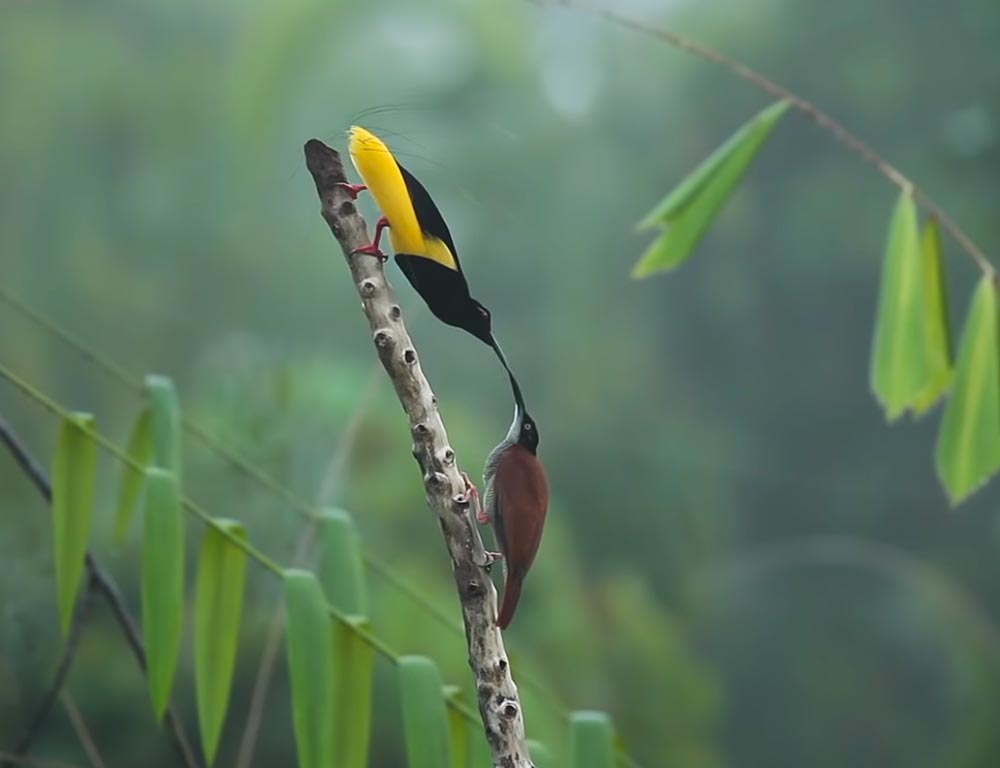
- Scientific name: Seleucidis melanoleucus
- Population: Unknown, likely decreasing
- Life span: 5-8 years
- Size: 10-12 inches
- Weight: Approximately 1 pound
- Wingspan: Information not widely available
- Status: Near Threatened
The Twelve-Wired Bird-of-Paradise, native to New Guinea, is recognized for its striking plumage and long, wire-like tail feathers.
While specific population numbers are unknown, there are concerns about a decreasing trend due to habitat loss.
With a lifespan of 5-8 years, these birds play a vital role in the rainforest ecosystem. Their near-threatened status highlights the need for conservation efforts to protect their unique habitats.
22. Blue Bird-of-Paradise
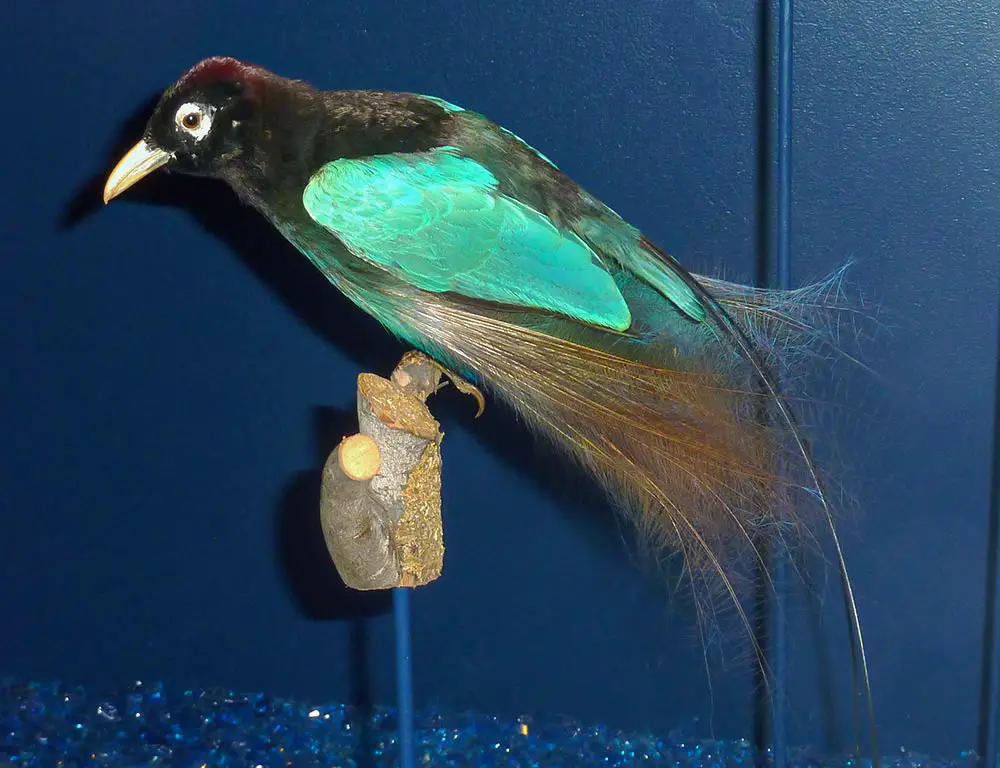
- Scientific name: Paradisaea rudolphi
- Population: Unknown, likely decreasing
- Life span: 5-8 years
- Size: 12-13 inches
- Weight: Approximately 1 pound
- Wingspan: Information not widely available
- Status: Near Threatened
The Blue Bird-of-Paradise, native to Papua New Guinea, is known for its vibrant blue and black plumage.
While specific population numbers are unknown, there are concerns about a decreasing trend due to habitat loss.
With a lifespan of 5-8 years, these birds contribute to the biodiversity of their ecosystems. Conservation efforts are crucial to protect their habitats and ensure the survival of this near-threatened species.
23. Raggiana Bird-of-Paradise
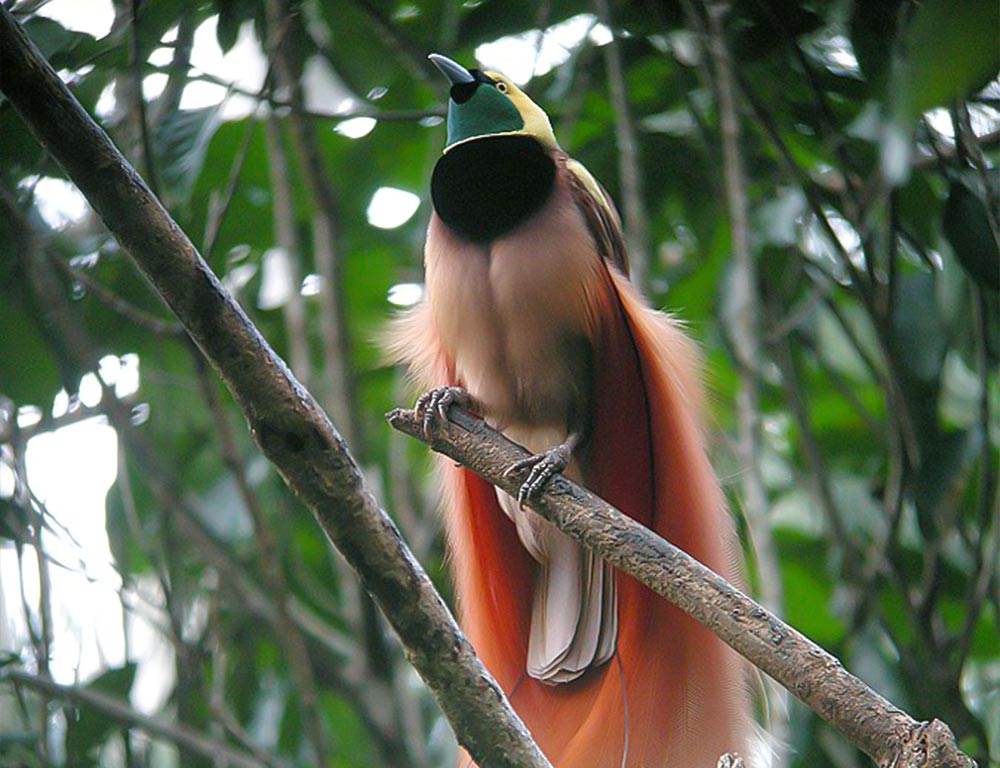
- Scientific name: Paradisaea raggiana
- Population: Unknown, likely stable
- Life span: 5-8 years
- Size: 14-17 inches
- Weight: Approximately 1 pound
- Wingspan: Information not widely available
- Status: Least Concern
The Raggiana Bird-of-Paradise, native to Papua New Guinea, is characterized by its vibrant plumage and distinctive fan-like tail.
While specific population numbers are unknown, they are presumed to be stable. With a lifespan of 5-8 years, these birds contribute to the biodiversity of their ecosystems.
Their least concern status emphasizes the importance of preserving their habitats and protecting the rich avian diversity in the region.
Wrapping Up
Exploring birds similar to peacocks reveals a diverse array of species, each with unique characteristics and ecological roles.
From the elaborate displays of pheasants to the vibrant plumage of junglefowl, ocellated turkeys, and long-tailed widowbirds, nature showcases its creativity through these avian wonders.
Additionally, the captivating green and blue hues of the green peafowl and the rare Congo peafowl add to the marvels of the avian world.
In captivity, variations like the black-shouldered, Spalding, and white peafowl exhibit human-induced diversity.
Meanwhile, the imperiled status of some species, such as the ocellated turkeys and green peafowl, underscores the importance of conservation efforts. Best of luck.